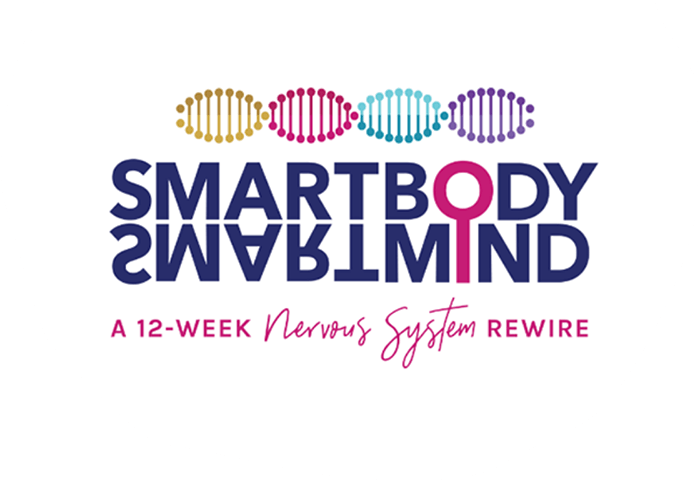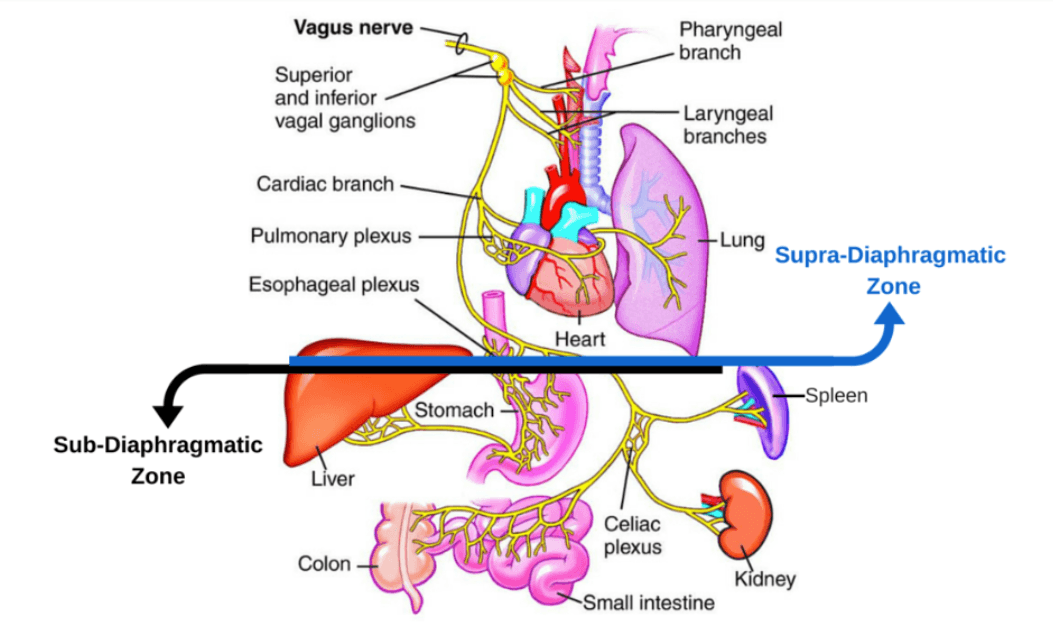This section addresses the following questions:
- I want to visualize the vagus nerve. Is it really a whole tree of branches?
- When I experience a panic attack, the pattern is usually that I get very overstimulated, and then feel my heart rate suddenly calm down. Is this the dorsal vagal getting flipped on to slow things down?
- How can a little dorsal vagal be good for rest-and-digest and a lot of dorsal vagal be damaging to one’s gut? What if there is almost no dorsal vagal, how does that impact the gut?
- Can we calm the system with gentle pressure (like a pillow on abdomen)?
- In the past I was not receptive to talking with a loved one as a way to calm down. Recently, I’ve noticed that I am receptive to this. Is this a sign that my ventral vagal is functioning better?
- Can kids in mid- to late-teens grow their vagus nerve by being in connection with a loving parent?
- Can social engagement be enough to repair a ventral vagal nerve that never fully developed due to neglect?
Yes, the Vagus nerve is very much like a tree, but with two trunks! One trunk is the Ventral Vagus and the other is the Dorsal Vagus. The Ventral Vagus enervates parts of the face and the organs above the diaphragm, while the Dorsal enervates all the organs below the diaphragm. Below is a picture. While it doesn’t show the two ‘trunks’ specifically, it shows all the organs both parts enervate.
The Vagus nerve plays a huge part in Parasympathetic function, which is to down-regulate the Sympathetic Nervous System. In other words, it helps to calm us down. The Ventral Vagus is the part we really want to do this. It is the part that governs social engagement and lets us, by engaging with safe people, or by making sound, or hearing soothing sounds, gently take the foot off of the ‘gas,’ which is the Sympathetic. The Dorsal Vagus, on the other hand, is more like the emergency brake. When a lot of energy goes into it (we call this High Tone Dorsal), it activates the Freeze, or shutdown response. This will also bring us out of Sympathetic, but it is a survival response and not very good for us when it has become the go-to option.
On the other hand, ‘Low Tone Dorsal,’ when a lesser amount of energy is in this system, is VERY good for us. The Low Tone Dorsal state lets us rest, digest, and repair our cells. It supports immune function and barrier-keeping in the gut. When we have more access to the Ventral Vagal part of this system, we will also have more access to this healthy ‘Low Tone’ state. This is optimal. With unresolved trauma in the picture though, it is much more common to flip between high Sympathetic activation (Fight/Flight), and High Tone Dorsal (Freeze). When this is the case our gut is impacted because we don’t have nearly as much access to healthy digestion and barrier keeping in the gut.
One way we can start to access more healthy ventral function is through things like containment. A weighted blanket or pillow on the abdomen and chest is one example, which usually sends a signal of containment and safety to the organs there, which in turns helps the Vagus. Another way is by engaging with safe people, which stimulates the Ventral Vagus. If we have been through trauma we may have a strong resistance to engaging with people in general, because our system interprets all people as potential threats, so if we notice an improvement in our ability to interact with others in a calming way, this is a big sign that our Ventral Vagal function is improving, and less energy is going into the survival responses. It’s never too late to do this! We may never get to be exactly as we would have been had we not been traumatized in the first place, but huge improvements can be made in the functioning of our Vagus Nerve through safe relationships, such as with an attuned therapist, friend, partner, or caregiver.

